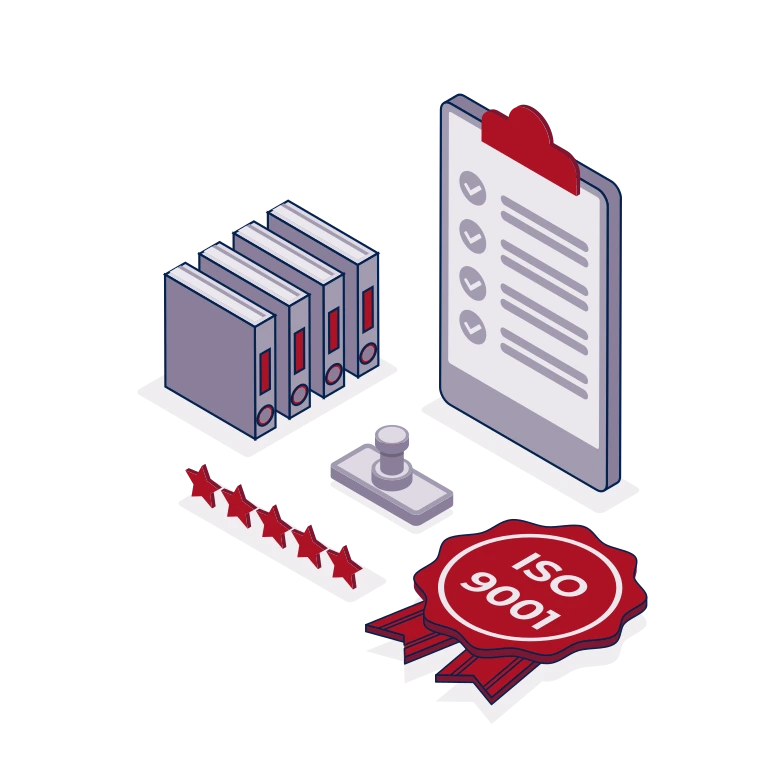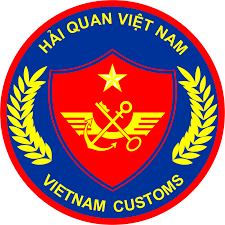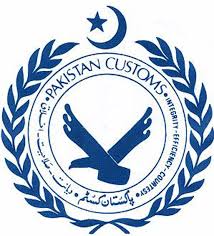Freight Shipping between Vietnam and Pakistan | Rates – Transit times – Duties and Taxes
Did you hear about the shipment from Vietnam to Pakistan that knew exactly where it was going? Me neither, and that's why this guide exists! Muddling through freight rates, transit times, and complex customs regulations is part and parcel of international shipping, often leading to headaches. This destination guide between Vietnam and Pakistan is here to streamline your understanding in these key areas. Expect to delve into the different transportation methods, unravel the intricate process of customs clearance, and get a grip on duties and taxes. We also pepper in essential advice to give your business the competitive edge. If the process still feels overwhelming, let FNM Vietnam handle it for you! As your international freight forwarder, we'll navigate the process for you, turning challenges into opportunities for success.
Which are the different modes of transportation between Vietnam and Pakistan?
Choosing the right transport method from Vietnam to Pakistan isn't just a matter of hopping from A to B. Imagine crossing a vast sea or winding through a maze of roads- distance and international borders create a real challenge. Luckily, there are some practical solutions- like sea and air freight that fits perfectly like puzzle pieces into this geographical picture. Recognizing these options is like picking the most efficient path for a treasure hunt, a critical step to meet your unique shipping needs. So, let's dive into how to choose the best route for your goods' journey.
Need help with your shipment?
Need assistance with your shipment? Dont hesitate to contact us even for a simple question. Choose the option that suits you
Live chat with an expert Chat on WhatsApp Free Quote 24hHow can FNM Vietnam help?

Sea freight between Vietnam and Pakistan
Ocean freight between Vietnam and Pakistan carries a vibrant exchange of goods, with busy cargo ports like Ho Chi Minh City and Karachi serving as key lifelines for this thriving trade relationship. As the slowest but most cost-effective solution for high-volume goods, sea freight truly makes its presence felt in the balance sheets of numerous businesses across these industrial powerhouses.
However, the journey isn’t always smooth sailing. From understanding complex customs regulations to juggling logistics amid seas of paperwork, businesses often stumble in their quest for seamless shipping. But don’t worry, you aren’t alone in this ocean of challenges. This guide will be your compass to ease your voyage, brushing through best practices and specifications that could transform your shipping experience. Right from the documentation to choosing the apt shipping lines, consider this guide your reliable mate on your trade journey. Tighten your life vests as we plunge into the depths of smart shipping. Better shipping decisions are just a few scrolls away!
Main shipping ports in Vietnam
Port of Saigon
Location and Volume: Situated in Ho Chi Minh City, Port of Saigon is known for its important strategic location in the heart of Vietnam’s commercial hub and handles over 6 million TEUs annually.
Key Trading Partners and Strategic Importance: It’s a major connection point for trading with the United States, China, and European countries. Its strategic importance lies in its modern facilities and deep-water access, accommodating large vessels and rate of cargo handling.
Context for Businesses: If you’re looking to distribute goods swiftly within Vietnam or to Southeast Asian markets, the Port of Saigon could be the right choice due to its efficient operations and proximity to production centers.
Port of Hai Phong
Location and Volume: Located in the northern city of Hai Phong, this port handles over 2 million TEUs per year.
Key Trading Partners and Strategic Importance: The port is crucial for trade with China, South Korea, and Japan, and it plays an essential strategic role as the largest port in northern Vietnam.
Context for Businesses: If your target markets are China or the northern provinces of Vietnam, the Port of Hai Phong’s location and connectivity make it an attractive option.
Port of Da Nang
Location and Volume: Set in the central Vietnamese city of Da Nang, this port processes around 800,000 TEUs annually.
Key Trading Partners and Strategic Importance: The Port of Da Nang plays a vital role in trade with Japan, China, and Singapore, among others. Strategically, it’s a significant port due to its central location in Vietnam and its rapid modernization.
Context for Businesses: For companies looking to reach out to the central Vietnamese market or nearby Asian regions, the Port of Da Nang’s strategic position could fit well into your logistics plan.
Main shipping ports in Vietnam
Port of Saigon
Location and Volume: Situated in Ho Chi Minh City, Port of Saigon is known for its important strategic location in the heart of Vietnam’s commercial hub and handles over 6 million TEUs annually.
Key Trading Partners and Strategic Importance: It’s a major connection point for trading with the United States, China, and European countries. Its strategic importance lies in its modern facilities and deep-water access, accommodating large vessels and rate of cargo handling.
Context for Businesses: If you’re looking to distribute goods swiftly within Vietnam or to Southeast Asian markets, the Port of Saigon could be the right choice due to its efficient operations and proximity to production centers.
Port of Hai Phong
Location and Volume: Located in the northern city of Hai Phong, this port handles over 2 million TEUs per year.
Key Trading Partners and Strategic Importance: The port is crucial for trade with China, South Korea, and Japan, and it plays an essential strategic role as the largest port in northern Vietnam.
Context for Businesses: If your target markets are China or the northern provinces of Vietnam, the Port of Hai Phong’s location and connectivity make it an attractive option.
Port of Da Nang
Location and Volume: Set in the central Vietnamese city of Da Nang, this port processes around 800,000 TEUs annually.
Key Trading Partners and Strategic Importance: The Port of Da Nang plays a vital role in trade with Japan, China, and Singapore, among others. Strategically, it’s a significant port due to its central location in Vietnam and its rapid modernization.
Context for Businesses: For companies looking to reach out to the central Vietnamese market or nearby Asian regions, the Port of Da Nang’s strategic position could fit well into your logistics plan.
Main shipping ports in Pakistan
Port of Karachi
Location and Volume: Located on the Arabian Sea, the port of Karachi is the busiest port in Pakistan, handling approximately 60% of the nation’s cargo. Overall, it has an annual handling capacity of over 1.5 million TEU.
Key Trading Partners and Strategic Importance: China, the United Arab Emirates, and the United States are among its key trading partners. The port’s strategic importance is bolstered by the fact that it is the end terminal of the sea route into central Asia, often considered a gateway for the rich agricultural and industrial hinterland.
Context for Businesses: If your business aims to reach marketplaces located across central Asia, then shipping through the Port of Karachi could streamline your supply-chain processes owing to its prominent position and established trading routes.
Port Qasim
Location and Volume: Situated 50 kilometers southeast of Karachi, Port Qasim ranks as the second busiest port in the country. It handles an annual volume of approximately one million TEU, accounting for 40% of Pakistan’s sea-based trade.
Key Trading Partners and Strategic Importance: Primary trading partners include the Middle East, Asia, Europe, and the Americas. With the only LNG terminal in the country, Port Qasim plays a vital role in meeting the country’s energy demands.
Context for Businesses: If your business deals with energy commodities, particularly LNG, utilizing Port Qasim for shipments could mean better storage facilities and faster processing times. Its strategic location closer to national industrial hubs can also support efficient inland transportation.
Gwadar Port
Location and Volume: Gwadar Port, located in southwestern Pakistan, is a growing maritime hub with a promising future. It’s currently being developed as a deep-sea port and has an annual handling capacity of over 400,000 TEU.
Key Trading Partners and Strategic Importance: At the heart of the China–Pakistan Economic Corridor, major trading partners include China and the Middle East. Gwadar Port, once developed, is expected to serve as a significant gateway for trade between China and the Middle East and Africa.
Context for Businesses: If you are looking to expand your business to new and promising markets, like China or Africa, Gwadar Port might prove to be a tactical entry point in the near future. Its ongoing development and links to key economic corridors make this port one to watch.
Should I choose FCL or LCL when shipping between Vietnam and Pakistan?
Deciding between Full Container Load (FCL) and Less than Container Load (LCL), or consolidation, for your sea freight from Vietnam to Pakistan is no small task. This decision can make a world of difference in regard to your shipping costs, timeframes, and overall business operations. Get ready to delve deep into these two options and find the right fit for your cargo. With knowledge in your court, you will be empowered to steer your shipping strategy successfully, matching your unique needs. Let’s jump in and unravel the complexities, shall we?
Full container load (FCL)
Definition: FCL, or Full Container Load, is a type of shipping mode where one entire container is used exclusively for a single shipment. The key here is exclusivity - whether a 20'ft or 40'ft container, it's all yours.
When to Use: FCL shipping becomes the cost-effective and safer choice for larger shipments. If your cargo exceeds 13/14/15 CBM, fas an FCL shipping quote likely beats the cost of LCL (Less Container Load). With FCL, the container is sealed at origin and remains unopened until it reaches the destination - minimizing potential damage.
Example: Picture this. You're exporting 100 CBM of textiles from Vietnam to Pakistan. Choosing an FCL container allows you to pack all your goods into a 40'ft container, sealed from the moment it leaves your warehouse until it arrives to your customer, ensuring safety.
Cost Implications: Given the high volume of your shipment, securing an FCL shipping quote could significantly reduce your per unit shipping cost. Plus, customs related expenses may be lesser as you won't be sharing a container with other shipments. Despite higher upfront costs, the benefits often balance out for large volume shipments.
Less container load (LCL)
Definition: Less than Container Load (LCL) shipping is a method of freight transportation, ideal for smaller volumes. In this method, you share container space with other shippers, thereby consolidating multiple shipments in one place.
When to Use: LCL is highly recommended when your shipment volume is low- not exceeding 13/14/15 CBM. It provides more flexibility as you pay only for the space you occupy, making it a cost-effective option for smaller businesses or infrequent shippers.
Example: Consider a manufacturer of bamboo products in Vietnam who receives an order from a retailer in Pakistan for small quantities of goods. They would pack their merchandise, send it to a warehouse for consolidation with other LCL shipments, and pay only for the volume their cargo uses.
Cost Implications: LCL proves to be more economical for smaller consignments, due to shared costs. However, on the flip side, the handling fees and logistics processes can be complex and slightly higher per CBM than Full Container Load (FCL) shipping. Nevertheless, as an LCL shipment, it grants affordability and flexibility without the need for a significant capital outlay.
Remember, obtaining an LCL shipping quote and understanding LCL freight costs can assist in making informed shipping decisions.
Hassle-free shipping
Making international shipping a breeze, FNM Vietnam is your go-to freight forwarder. Our ocean freight experts stand ready to guide your choice between consolidation and a full container, always keeping an eye on your cargo volume, budget, and urgency. Let's make informed decisions together to optimize your logistic costs and delivery times. We're eager to provide tailored solutions for your business. Interested? Reach out now for a hassle-free estimate!
On average, sea freight between Vietnam and Pakistan typically takes varying lengths of time dependent on a range of factors. Among these are the specifics of the ports being used for loading and discharging, the weight, and the nature of the goods being shipped. For an accurate, tailored quote, we strongly recommend contacting a professional and experienced international freight forwarder, such as FNM Vietnam.
Let’s now explore the estimated transit times for the main sea freight ports in both countries:
| Vietnamese Ports | Pakistani Ports | Average Transit Times (Days) |
| Hai Phong Port | Karachi Port | 12 |
| Ho Chi Minh Port | Karachi Port | 15 |
| Hai Phong Port | Qasim Port | 13 |
| Ho Chi Minh Port | Qasim Port | 17 |
*Please note that these averages should serve as an initial guide only. Real-world transit times can vary due to myriad factors outside of control, so a personalised quote is always your best bet.
How much does it cost to ship a container between Vietnam and Pakistan?
Unraveling the specifics of shipping costs between Vietnam and Pakistan can be a bit like untangling a knot. With ocean freight rates typically falling within a broad range per CBM, pinpointing an accurate figure can be tricky. Variables including the Point of Loading, Point of Destination, the carrier, nature of goods, and even monthly market fluctuations can significantly sway the final quote. But fear not! Our adept shipping specialists are on hand to navigate this complex pricing terrain. We meticulously chalk out costs on a case-by-case basis, ensuring you net the best rates aligned with your distinct shipping needs. Rest assured, we’ve got your shipping cost concerns covered!
Special transportation services
Out of Gauge (OOG) Container
Definition: Out of Gauge (OOG) containers are tailored to hold cargo that does not fit into standard containers due to over-dimensional characteristics – hence the term ‘Out of Gauge’. They have been specially designed to handle and protect the ‘OOG container’ freight transported between Vietnam and Pakistan.
Suitable for: These containers are apt for transporting large machinery, construction materials, industrial equipment, turbines and other items that don’t conform to standard container sizes.
Examples: Some of the typical goods shipped between Vietnam and Pakistan could be bulky agricultural equipment or oversized manufacturing machinery.
Why it might be the best choice for you: If your business relies on moving equipment or items that significantly surpass regular dimensions, then OOG containers offer a robust solution to safeguard your ‘Out of gauge cargo’ during transit.
Break Bulk
Definition: Unlike container shipping, break bulk cargo is shipped as individual pieces or units, making this option flexible for handling ‘loose cargo loads’.
Suitable for: Break bulk is the go-to choice for non-containerized goods and oversized loads that can’t fit into standard containers.
Examples: Substantial components for projects like power plants, refineries or infrastructure development projects are typically shipped as break bulk between Vietnam and Pakistan.
Why it might be the best choice for you: If you’re shipping large items that don’t fit well into containers, break bulk offers the flexibility your business needs.
Dry Bulk
Definition: ‘Dry bulk’ refers to goods shipped in massive quantities, stored directly in the vessel’s hold without any packaging.
Suitable for: Dry bulk is optimal for commodities like grains, ores, or coal which can be loaded and unloaded efficiently at bulk handling ports.
Examples: Businesses shipping large volumes of rice, coffee, or minerals from Vietnam to Pakistan can benefit from dry bulk shipping.
Why it might be the best choice for you: If you’re moving large quantities of loose materials or granular goods, dry bulk shipping could be the most effective and cost-efficient option.
Roll-on/Roll-off (Ro-Ro)
Definition: The ‘Roll-on/Roll-off’ shipping method involves vehicles or machinery that can be driven onto a dedicated ‘ro-ro vessel’.
Suitable for: This method is perfect for wheeled cargo such as cars, truck/trailers, semi-trailers, trailers, caravans, buses, or equipment like tractors.
Examples: Transporting assembled vehicles or machinery directly from Vietnamese factories to Pakistani markets often utilizes ro-ro shipping.
Why it might be the best choice for you: So, if your goods come with wheels, ro-ro offers a simple, efficient method to get your cargo from A to B with minimal handling, reducing the risk of damage.
Reefer Containers
Definition: Reefer containers are a specific type of shipping container with built-in refrigeration for the transportation of heat-sensitive or perishable commodities.
Suitable for: They are ideal for food items, pharmaceuticals, or any other cargo that require controlled temperature settings during the journey.
Examples: Businesses trading seafood, fruits, and vegetables or pharmaceutical products between Vietnam and Pakistan will find reefer containers especially handy.
Why it might be the best choice for you: If you’re shipping perishable or temperature-sensitive goods, reefer containers ensure your cargo arrives in optimal condition, preserving your business’s high-quality standards.
Navigating the nuances of international shipping can be overwhelming. Thankfully, at FNM Vietnam, we’re here to make the process smoother for you. Don’t hesitate to contact us for a free shipping quote in less than 24h. Let our logistical expertise navigate the seas for you!
Air freight between Vietnam and Pakistan
For fast and reliable transportation of goods between Vietnam and Pakistan, air freight emerges as a key player. It’s perfect for compact, high-value items – think electronics or high-end textiles. Despite higher upfront costs, the speedy transit offsets potential holding or warehousing expenditures, proving cost-effective for such shipments. However, many businesses stumble when they overlook crucial factors. The real cost of air freight isn’t just about the sticker price. Missteps like miscalculating shipment weight or overlooking best practices can empty your pockets faster than a hole-riddled wallet! Worry not, we’ll guide you through the labyrinth of airfreight forwarding, sans these common pitfalls. Stay tuned!
Air Cargo vs Express Air Freight: How should I ship?
Deciding on the best way to send your goods from Vietnam to Pakistan? It all boils down to whether speed or cost is your top priority. In a nutshell, an air cargo shipment hitches a ride in an airline along with other cargo, balancing time and budget. In contrast, express air freight has your goods zooming straight to the destination in a dedicated plane, ensuring the quickest journey for a premium price. Let’s dive into the specifics to help you choose the right fit.
Should I choose Air Cargo between Vietnam and Pakistan?
If you’re weighing up shipping options between Vietnam and Pakistan, consider air cargo; cost-effective, reliable, and suitable for shipments over 100/150 kg (220/330 lbs). Airlines such as Vietnam Airlines and PIA provide frequent, dedicated freight services. Despite longer transit times due to set flights, this method assures timely delivery, potentially aligning with your budget and urgency needs. Explore possibilities through these airlines before making a final decision.

Should I choose Express Air Freight between Vietnam and Pakistan?
Opting for express air freight could be your ideal solution for shipping goods between Vietnam and Pakistan, particularly if they weigh less than 100/150 kg (220/330 lbs) or total under 1 CBM. Known for its speedy transit times, express air freight operates without passengers, solely focusing on cargo delivery. International express courier firms like FedEx, UPS, and DHL are leaders in this niche. They ensure your shipments arrive swiftly, securely, minimizing any potential delays. So, if time is critical and your shipments aren’t excessively heavy or large, express air freight could be a perfect fit for your business needs.

Main international airports in Vietnam
Tan Son Nhat International Airport
Cargo Volume: Handles approximately 800,000 tonnes of cargo per year.
Key Trading Partners: Primarily deals with China, Korea, the United States, Japan, and Taiwan.
Strategic Importance: It’s the busiest airport in Vietnam, providing a significant link to major cargo hubs around the world.
Notable Features: The airport includes leading freight companies, offers 24/7 customs services and boasts cutting-edge technology in cargo handling.
For Your Business: Located conveniently near Ho Chi Minh City, this airport could be a key component of your shipping strategy if your cargo’s destination involves Southern Vietnam or nearby regions.
Noi Bai International Airport
Cargo Volume: Processes over 700,000 tonnes of cargo annually.
Key Trading Partners: Mainly trades with China, the US, Japan, Taiwan, and South Korea.
Strategic Importance: Noi Bai International Airport provides an essential cargo corridor to Northern Vietnam and the capital city, Hanoi.
Notable Features: Noi Bai offers extensive warehouse and storage facilities, modern handling equipment, and 24/7 customs services.
For Your Business: If your target market is in Northern Vietnam or regions around Hanoi, you might want to consider Noi Bai International Airport as your primary transport hub.
Cam Ranh International Airport
Cargo Volume: Approximately 120,000 tonnes per year.
Key Trading Partners: Primarily facilitates trade with Russia, South Korea, and China.
Strategic Importance: This airport serves the South Central Coast region of Vietnam, with close proximity to Nha Trang city and its surrounding industrial zones.
Notable Features: Cam Ranh airport offers 24 hours of customs operation and has recently expanded to improve cargo capacity.
For Your Business: Depending on your business operations in the South Central Coast region, Cam Ranh airport can provide an efficient connection between this area and vital overseas markets.
Da Nang International Airport
Cargo Volume: Handles yearly cargo volume of more than 100,000 tonnes.
Key Trading Partners: Main trading partners include China, Japan, and South Korea.
Strategic Importance: Serving the economic and tourist hub of Da Nang city, this airport is crucial for trade with Central Vietnam.
Notable Features: This airport emphasizes its leading cargo handling technology, wide-range storage facilities, and available 24/7 customs services.
For Your Business: Your enterprise could benefit from this airport, taking advantage of the fast growth and economic vibrancy of Central Vietnam, and the growing popularity of Da Nang city for international sea-land-air multimodal transportation.
Qui Nhon Airport
Cargo Volume: Handles just around 20,000 tonnes each year.
Key Trading Partners: Primarily trades with cargo partners in China, Japan, and South Korea.
Strategic Importance: Provides important connection to the Eastern Vietnam and its various industrial and economic zones.
Notable Features: Offers robust custom operation capacity and a steady flight schedule despite its smaller size.
For Your Business: If your logistics operations target the eastern parts of Vietnam, Qui Nhon Airport may offer a practical and cost-effective solution for your air cargo requirements.
Main international airports in Pakistan
Jinnah International Airport
Cargo Volume: As Pakistan’s busiest airport, it handled nearly 509,085 tonnes of cargo in 2018.
Key Trading Partners: Trades with prime partners like China, UAE, Qatar, and UK.
Strategic Importance: Located in Karachi, it’s a major gateway for cargo coming from and going to the southern parts of the country and oversees many international trading routes.
Notable Features: Includes dedicated cargo terminal facilities and bonded warehouses for secure storage of goods.
For Your Business: Proximity to the port of Karachi makes it a viable choice for multimodal freight transport. If your business involves exports and imports from southern Pakistan, utilizing Jinnah International can streamline your logistics.
Allama Iqbal International Airport
Cargo Volume: Three terminals, including one dedicated for cargo, collectively processed 148,000 tonnes of cargo in 2019.
Key Trading Partners: Primary trading relationships are with China, UAE, Saudi Arabia, and Turkey.
Strategic Importance: Situated in Lahore, the capital city of Punjab, it’s an essential airport for the surrounding industrial zones.
Notable Features: Modern facilities such as a perishable handling center for sensitive goods.
For Your Business: If your company exports items like perishable items or textiles commonly produced in Punjab, the dedicated cargo terminal and facilities can improve logistics efficiency.
Benazir Bhutto International Airport
Cargo Volume: Handles approximately 48,868 tonnes of cargo annually.
Key Trading Partners: Regular cargo flights to UAE, Qatar and European countries.
Strategic Importance: Located in Islamabad, it’s the main airport serving the country’s capital.
Notable Features: Features modern cargo logistics, including cool chain facilities.
For Your Business: Ideal for businesses located in northern Pakistan with regular freight destined for the Middle East and Europe, offering efficient customs procedures.
Faisalabad International Airport
Cargo Volume: Annually handles around 20,821 tonnes of cargo.
Key Trading Partners: Has trading relationships with China, UAE, and Saudi Arabia.
Strategic Importance: Being in Faisalabad, the city known as the Manchester of Pakistan due its large textile industry, it’s a particular airport for exports of textiles.
Notable Features: The airport has been undergoing recent upgrades to improve its cargo handling capabilities.
For Your Business: The textile industry thrives in Faisalabad. If that’s your key market, shipping via Faisalabad International Airport could cut transportation times and costs.
Quetta International Airport
Cargo Volume: Annually handles around 18,400 tonnes of cargo.
Key Trading Partners: Key partnerships are with UAE, Saudi Arabia, and China.
Strategic Importance: Quetta, being the provincial capital of Balochistan, offers an accessible route to the province’s agriculture and mining goods.
Notable Features: Loads of infrastructure is built to handle cold storage materials.
For Your Business: If your venture involves the mining or agriculture sectors prevalent in Balochistan, Quetta International Airport could align perfectly with your logistics requirements.
How long does air freight take between Vietnam and Pakistan?
Air freight between Vietnam and Pakistan typically takes approximately 6 to 8 days. However, exact transit times can vary greatly depending on various factors, such as specific airports the shipment is going in and out, the weight of-the package, and the nature of the goods being shipped. For precise times tailored to your specific shipment needs, consider consulting with a seasoned freight forwarder like FNM Vietnam.
How much does it cost to ship a parcel between Vietnam and Pakistan with air freight?
The average air freight cost per kg between Vietnam and Pakistan might range between $3 to $6. However, establishing an exact rate isn’t straightforward. It fluctuates due to several factors including the distance from the departing and arriving airports, parcel dimensions, weight, and the nature of goods. Our team understands these complexities and ascertains to provide customized quotes to give you the best rates tailored to your specific needs. Why not get started today? You can contact us and receive a free quote in less than 24 hours. Your perfect shipping solution could be just a call away!
What is the difference between volumetric and gross weight?
Gross weight refers to the weight of the shipment including packaging. On the other hand, volumetric weight, also known as dimensional weight, reflects the density of the package. Essentially, it’s a weight calculated on the total space occupied by the package.
Calculating the gross weight is straightforward — it’s merely the total weight of your package, including the goods and packaging material, expressed in kilograms (kg). Express Air Freight and Air Cargo services both follow the same principle for this.
For volumetric weight, Express Air Freight calculates using the formula: Length (cm) x Width (cm) x Height (cm) / 5000 = Volumetric weight in kg. While for Air Cargo, it’s: Length (cm) x Width (cm) x Height (cm) / 6000. This difference arises from the varied dimensional factors used by these services.
Let’s consider an illustrative example. If your package measures 60cm x 50cm x 40cm, and weighs 25kg, the volumetric weight for Express Air Freight would be: 60 x 50 x 40 / 5000 = 24kg (52.91 lbs). For Air Cargo, it would be: 60 x 50 x 40 / 6000 = 20kg (44.09 lbs).
Freight charges are typically determined by comparing the gross weight and the volumetric weight. Services charge based on whichever weight is higher. This practice ensures shippers account for both the weight and size of their packages, promoting efficient usage of space on transportation vessels.

Door to door between Vietnam and Pakistan
Unraveling the convenience of door-to-door shipping, specifically from Vietnam to Pakistan, it’s a comprehensive service that handles your goods from origin to destination. This cost-effective option reduces stress, saves valuable time, and brings your shipments to the doorstep reliably and efficiently. But there’s more to door-to-door. Curious about the details and advantages? Let’s dive in!
Overview – Door to Door
Shipping goods from Vietnam to Pakistan? Let’s break down the complexities. Door-to-Door shipping resolves the drawbacks of traditional methods, ensuring a seamless transfer of goods. By overseeing all elements – from pickup to delivery and customs clearance – your logistics challenges are reduced. However, it can be costlier and due to reliance on a single service, delays are possible. Played out well, our clients in FNM Vietnam find it a dynamic yet serene logistics solution. Rest assured, stress-free shipping is feasible, despite countless hurdles. Learn how in this guide.
Why should I use a Door to Door service between Vietnam and Pakistan?
Imagine no more endless days playing detective, tracking your shipment across multiple carriers and countries. With door-to-door service from Vietnam to Pakistan, your business can practically kick back and sip margaritas, while logistics conduct themselves as smoothly as a symphony orchestra. Here are the top-notch reasons why this is the sweetest deal for you:
1. Stress Free Logistics: Imagine a world where you don’t have to negotiate with numerous carriers or sort through loads of paperwork. Door-to-door services handle all the administrative burden, preventing Hulk-like stress transformations.
2. Timely Delivery: Are you racing against the clock? Door-to-door services shine in this regard, delivering quicker timeframes from offload to final destination. No more anxiety-filled nights wondering if your shipment will arrive on schedule!
3. Specialized Handling: Complex cargo? Fragile goods? These services provide niche care with superior efficiency. So, whether you’re shipping important documents or fragile porcelain, rest easy knowing your goods are being handled with TLC (tender loving care).
4. Convenience: With this service, your shipment duties end once the goods leave your premises; the freight forwarder steps in to ensure a smooth journey until the final destination. You can focus on your business while they play logistics maestro!
5. Tracking: This service usually comes with real-time tracking, adding an extra layer of control and assurance. Keep tabs on your shipment as you would on an engrossing Netflix series, from the comfort of your office chair!
Remember, door-to-door service can be your logistics butler, ensuring a seamless experience from start to finish!
FNM Vietnam – Door to Door specialist between Vietnam and Pakistan
Experience hassle-free door-to-door shipping between Vietnam and Pakistan with FNM Vietnam. We’re your A to Z shipping solution, proficient in packing, transport, customs clearance, and utilizing all shipping methods. But we go a step further. You get a dedicated Account Executive to streamline your process. All it takes is a call or contact form to receive a free estimate in less than 24 hours. Talk to our consultants for free – leave the heavy shipping to us while you focus on what matters.
Customs clearance in Pakistan for goods imported from Vietnam
Navigating customs clearance in Pakistan for goods imported from Vietnam can appear daunting. It’s a complex, multi-tiered process involving more than just shipping goods – it could be riddled with unexpected charges or fees, easily turning into a logistical nightmare. That’s where understanding customs duties, license requirements, taxes, and quotas becomes pivotal. Without this, your goods risk languishing in customs limbo. But there’s light at the end of the tunnel. Our detailed guide breaks down each stage of the process, helping you conquer the complexities. And here’s the good news: FNM Vietnam can assist you throughout this process. Just contact our team with three key details: the origin of your items, their value, and the HS Code. We are poised to provide estimates, helping you plan your budget without breaking a sweat. With FNM, traversing the customs labyrinth becomes a breeze!
How to calculate duties & taxes when importing from Vietnam to Pakistan?
If you’re transferring goods from bustling Vietnam to the dynamic markets of Pakistan, one challenge is estimating the crucial aspect of duties and taxes. The calculation process takes into consideration several key factors: the country of origin, the Harmonized system or HS Code, the Customs Value, the Applicable Tariff Rate, and any other possible taxes and fees linked to your freight. Think of it as a jigsaw puzzle, each piece adding to the bigger picture of your import cost.
Let’s get started on your estimation. Your journey begins with identifying the birthplace of your goods, essentially, the country where your goods emerged – were they made or produced? From Vietnamese grow-grounds or handicraft workshops, the origin of your product paints the first strokes of your customs duty calculation canvas.
Step 1 – Identify the Country of Origin
Knowing your goods’ origin is pivotal to correctly estimate duties and taxes for imports from Vietnam to Pakistan. First, it establishes eligibility for preferential trade agreements, possibly reducing or eliminating duties. Second, it aids in accurately acquiring the Harmonized System (HS) code, leading to correct duty estimation. Third, it helps identify specific import rules, crucial for understanding potential restrictions or additional requirements. Fourth, it assists in determining potential anti-dumping duties. Finally, it offers clearer insight into trade statistics, helping you strategize your operations.
Vietnam and Pakistan aren’t currently part of a free trade agreement, which means the standard WTO rates would apply.
Import restrictions? Yes, they exist. For example, used electronic products can’t directly be imported into Pakistan from Vietnam.
Here’s a tip; always confirm the origin of every product component to not get tripped up! It may seem tedious, but it’ll save you headaches in the future.
Step 2 – Find the HS Code of your product
Understanding the Harmonized System (HS) Code of your product is an integral part of international shipping. This internationally standardized system of names and numbers is designated to classify traded goods. It helps streamline customs and tariff processes globally, ensuring a smoother journey for your goods.
More often than not, your product supplier would already know the appropriate HS Code due to their familiarity with the import regulations and what they’re exporting. So, it’s advised that your first step should be to consult them.
However, if you hit a wall there, don’t worry. You can quickly find the HS Code for your product with a systematic approach. Your first stop is the Harmonized Tariff Schedule. Open the Harmonized Tariff Schedule, input the name of your product in the search bar, and you’re just one step away from finding your product’s HS code.
The next step is to look at the Heading/Subheading column. This is where your HS Code lies.
It cannot be overstressed how crucial it is to nail down the correct HS Code. A misstep here could lead to delays in shipping and even potential fines. The accuracy of the HS Code is paramount for a straightforward transition through customs.
To help you better understand this, here’s an infographic showing you how to read an HS code. Through these steps, we hope to simplify your shipping process and make it as efficient as possible.
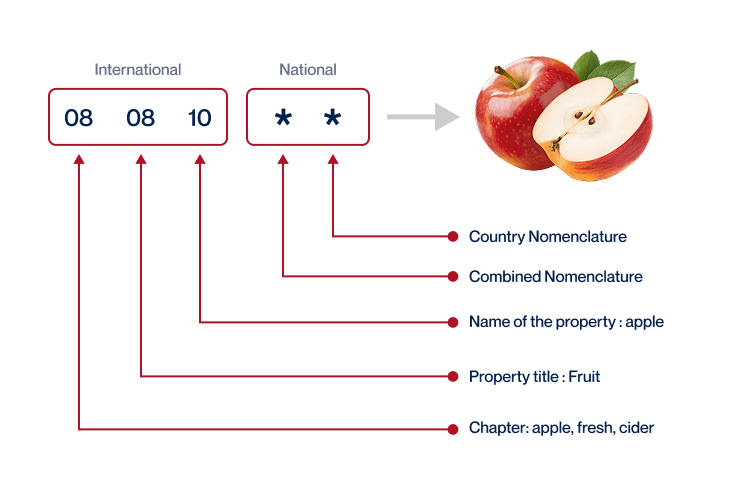
Step 3 – Calculate the Customs Value
When it comes to customs clearance in Pakistan for goods imported from Vietnam, the term ‘customs value’ can appear a bit daunting. But, it’s not as it seems. Technically, it’s the total value of the products, shipping cost, and insurance. It’s not just the price tag of your items; it’s a bit more.
Imagine importing a machine worth $3,000 from Vietnam. The freight charges could be $500 and insurance might cost $100. So, the customs value isn’t $3,000 (the price alone) but, it’s $3,600 (the price + freight + insurance which is referred to as CIF). This is what Pakistan’s customs will consider while calculating your duties. So, if you’re a business owner in Pakistan importing from Vietnam, it’s essential to accurately compute the customs value to prevent any costly surprises.
Step 4 – Figure out the applicable Import Tariff
An import tariff, essentially a tax, is levied by a country on goods coming in from abroad. In Pakistan, this could vary based on the type of goods and where they come from.
For instance, if you’re importing bicycles (HS code 8712.00.10) from Vietnam, you will need to find the applicable tariff rate in Pakistan. Here’s how:
1. Visit the official website of Pakistan’s Federal Bureau of Revenue.
2. Click on the ‘Tariff’ heading.
3. Under the ‘Tariff by Taric Code’ category, enter the HS code (8712.00.10).
4. You’ll then see the applicable customs duty, additional customs duty, and any regulatory duties for bicycles.
Let’s say the displayed Tariff rate is 20%. If your total Cost, Insurance, and Freight (CIF) value for importing bikes is $5000, you would calculate the import duties like so: 20%$5000 = $1000.
Understanding the import tariff is critical for estimating costs accurately and planning your import strategy. While complex, it becomes second nature with experience.
Step 5 – Consider other Import Duties and Taxes
When shipping goods from Vietnam to Pakistan, understanding the layered landscape of import duties and taxes is crucial. Outside the standard tariff rate, you may encounter additional costs based on the product’s nature and its country of origin.
Let’s imagine you’re importing bicycles. On top of the standard tariff, an excise duty may apply, intended for goods classified as luxuries or harmful to the environment or health. Then there’s the anti-dumping tax. If Pakistan believes bicycles are sold below market price in Vietnam, this tax could apply to prevent damaging the local industry.
Finally, the most critical additional fee is the Value Added Tax (VAT). This is calculated on the sum of the customs value of goods, your import duties, and other taxes payable. Let’s say your bicycles cost $5000, the customs value. If the import duty is 10% ($500), and the VAT rate is 17%, your VAT will be 17% of ($5000 + $500) = $935.
Remember, these are hypothetical figures. Always consult up-to-date, official tariff schedules for accurate calculations. It’s complex, but decoding these tax nuances can make all the difference to your bottom line!
Step 6 – Calculate the Customs Duties
Understanding and calculating customs duties is a crucial step in the process of importing goods from Vietnam to Pakistan. It involves determining the customs value (the cost of your goods, freight, and insurance), then applying the applicable rates for customs duties, VAT, and potentially, anti-dumping taxes, or Excise Duty.
Let’s assume the customs value of your shipment is $1000.
Example 1: If there’s a customs duty of 20% but no VAT, you pay $1000 20/100 = $200.
Example 2: If there’s a 10% customs duty and a 15% VAT, calculate customs duty first ($1000 10/100 = $100). Then, add the customs duty to your customs value, and apply the VAT (($1000 + $100) 15/100 = $165). So, you pay $100 (customs duty) + $165 (VAT) = $265.
Example 3: A scenario with 20% customs duty, 15% VAT, 5% anti-dumping tax, and a 3% Excise Duty would mean: customs duty = $200, VAT = $173, anti-dumping tax = $50, and Excise Duty = $9.5 (3% of $1000 + $200 (customs duty) + $173(VAT)). Total payable = $432.5.
Remember, our FNM Vietnam customs clearance services can simplify these calculations and the overall process for you, ensuring you’re never overcharged. We’re here to guide you through every step, and we can provide a free quote in less than 24 hours. Reach out to us today!
Does FNM Vietnam charge customs fees?
Customs duties can sometimes be a confusing part of shipping, especially between countries like Vietnam and Pakistan. Consider this: as a custom broker, FNM Vietnam doesn’t handle your customs duties – those go directly to the government. However, we do charge a fee for handling the customs clearance process. The documents we provide from customs offices serve as your receipt, ensuring you’ve only covered government-imposed charges. Think land tax vs realtor service fees, same idea! In reality, it’s a straightforward setup designed to simplify your cross-border shipping experience.
Contact Details for Customs Authorities
Vietnam Customs
Official name: General Department of Vietnam Customs Official website: http://www.customs.gov.vn/
Pakistan Customs
Official name: Federal Board of Revenue (FBR), Customs Wing Official website: http://www.fbr.gov.pk/
Required documents for customs clearance
Understanding the customs clearance process can be a headache without the right paperwork. We’re tackling the Bill of Lading, Packing List, Certificate of Origin, and CE conformance documents – all critical to ensure a smooth journey for your goods. Let’s decode these must-have documents together.
Bill of Lading
When shipping goods from Vietnam to Pakistan, you’ll need a Bill of Lading — your golden ticket in global trade. Acting as a legal receipt, it formally delineates the transfer of ownership from the seller (that might be you!) to the consignee. You’ll find details like cargo nature, quantity, destination, and sender on this ticket. In the modern, fast-paced world of freight forwarding, the telex (electronic) release of this document can save your day, offering swift movement of your cargo. For air shipping, don’t forget to keep your Air Waybill (AWB) handy. Remember, having these documents ready and correct keeps your goods moving and prevents them from becoming static at customs, a dreaded hurdle for anyone in international trade.
Packing List
Nailing your Packing List is non-negotiable when shipping goods from Vietnam to Pakistan. Picture this: you’ve ordered stylish lamps manufactured in Hanoi, all packed and ready to ship to Karachi. Now, this Packing List is your snapshot, outlining all the details customs officials need. It’s a ‘who’, ‘what’, ‘how many’, ‘how much does it weigh’ kind of document. One error missed during the hustle and could lead to shipment delays or extra charges. Whether you’re shipping by sea or air freight, it’s your responsibility to ensure precise details – and remember, customs officials will verify whether the lamps match that description. The Packing List isn’t just a piece of paper; it’s a vital link in the smooth transit of your goods. So, make sure it’s accurate, and your shipment will glide through customs.
Commercial Invoice
Packing your goods and ready to ship between Vietnam and Pakistan? Remember, your Commercial Invoice is the pulse of your shipment – it’s what tells customs officials what you’re shipping, and even a small discrepancy can lead to delays. This document needs essential details like your product’s value, quantity, description, and HS code. Always align information consistently with your packing list and bill of lading. Shipping from Ho Chi Minh City to Karachi? Ensure your invoice states your goods’ origin. Take a double-check: Given Pakistan’s strict rules, any inconsistencies between your invoice and reality could lead to hassles and extra fees at the Karachi port. Keeping your commercial invoice clean and accurate will help streamline your shipment’s journey from Vietnam to Pakistan.
Certificate of Origin
When shipping goods from Vietnam to Pakistan, your Certificate of Origin (CoO) is like a passport for your merchandise. This crucial document proves where your shipment was made, ensuring it’s treated right in customs. For instance, if your textiles were produced in Hanoi, your CoO will verify that. Plus, it might even land you beneficial customs duty rates! Simple oversights like forgetting to mention the country of manufacture could lead to complications, so take time to get it right. This way, you smoothen customs clearance, save money and promise a punctual delivery to your customer. Never underestimate the value of a clear, accurate Certificate of Origin in the world of international shipping.
Get Started with FNM Vietnam
Prohibited and Restricted items when importing into Pakistan
Understanding what you can and can’t import into Pakistan is critical. It’s not always clear cut and inconsistencies might lead to costly delays or fines. Let’s break down the facts about prohibited and restricted items, making this daunting task manageable and stress-free for you.
Vietnam – Pakistan trade and economic relationship
Vietnam and Pakistan have a rich trade history, solidifying their economic partnership over the years. The diplomatic relations, established in 1947, have grown into a robust economic bond, marked by milestones, such as the Bilateral Trade Agreement of 2005 aimed at promoting trade and commerce. Key sectors of interest encompass textiles, food processing, steel, and agricultural products, while the major commodities include rice, seafood, and coffee. An encouraging statistic is the two-way trade volume, which escalated to $797 million in 2022, showcasing a positive growth trajectory despite global challenges. Furthermore, there’s been a steady rise in mutual investments, with Pakistan investing about $15 million in Vietnam’s sectors such as IT and services. Both nations continue to strengthen their trade ties, amplifying their economic relationship that permeates through investments and mutual trade endeavors.
Your Next Step with FNM Vietnam
Additional logistics services
Warehousing
Finding trustworthy warehousing in Vietnam and Pakistan can be a puzzle. Specially, when your goods demand precise temperature conditions. Whether it's Vietnamese coffee or Pakistani textiles, secure storage is critical. We've got you covered. Not sure where to start? Check out more info on our dedicated page: Warehousing.
Packing
Ensuring your goods get from Vietnam to Pakistan safely is more than just the transport. It's about good packaging and repackaging, practiced by trustworthy agents, that caters to a wide range of products. Consider the fragile ceramics or the hefty machinery - each need their specific pack care. Trust us at FNM with this crucial step. More info on our dedicated page: Freight packaging.

Transport Insurance
Secure your shipment by opting for Cargo Insurance, a plan far superior to typical fire-only coverage. By taking pre-emptive action, you can prevent financial setbacks due to unpredictable incidents. Imagine a container being dropped at the port or damages during transit - these costs can stack up quickly! Dive in deeper and discover how to safeguard your freight on our dedicated page: Cargo Insurance.
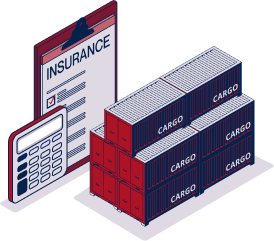
Household goods shipping
Moving personal effects from Vietnam to Pakistan? Stress no more! Our service ensures your fragile or bulky items are handled with utmost care. Ever tried packing a grand piano? We've done that, and more. For peace of mind on your big move, explore options at our dedicated page: Shipping Personal Belongings.
Procurement in Thailand
Thinking of scouting reliable suppliers in Asia or East Europe? FNM Vietnam simplifies the process for you. From identifying potential manufacturers to handling the whole procurement process, we've got you covered. Plus, forget about language hassles—we bridge that gap for you. For an in-depth look at this service, check out our dedicated page: Sourcing services.

Quality Control
Avoid potential product mishaps by conducting quality inspections during manufacturing for your Vietnam-Pakistan shipments. It's like a timely pit-stop in a Grand Prix, ensuring your goods meet the required standards before hitting the race track of logistics. Ever shipped a batch of ceramic mugs, only to find half of them cracked on arrival? We help you dodge such costly disappointments. Discover the nitty-gritty of our inspection process on our dedicated page: Quality Inspection.

Conformité des produits aux normes
Ensuring your goods meet destination requirements is crucial to smooth international shipping. Our Product Compliance Services handle this for you, with in-lab testing to achieve the vital certifications. Think of it as the difference between seamless customs clearance or encountering delays due to non-compliant products. It's your key to efficient and hassle-free shipping.
